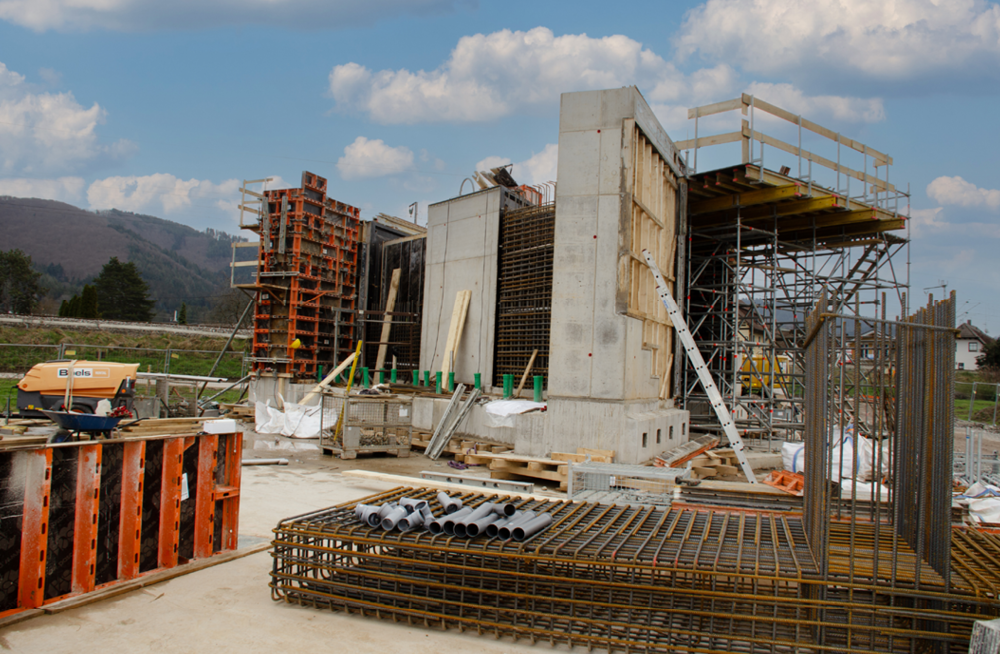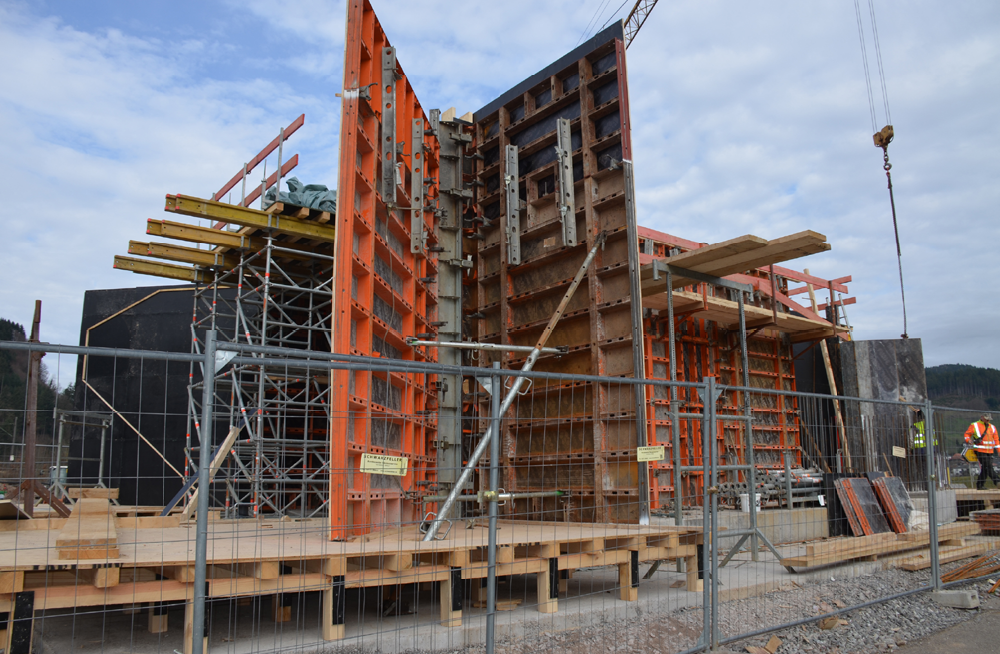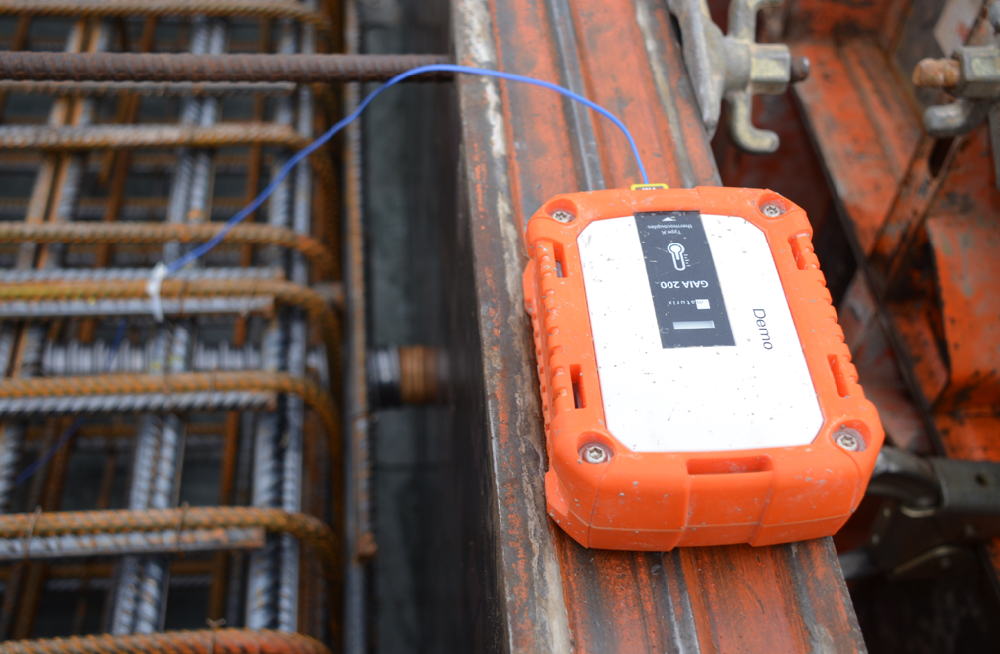In the Black Forest at the field factory: New railway bridges formed with LOGO.3
B+H Bau is renewing two railway bridges in Steinach, Germany for Deutsche Bahn. The formwork plan and wall formwork come from PASCHAL. The PASCHAL Maturix solution was used to calculate the right time to dismantle the formwork.Instead of an Easter egg hunt, the employees of B+H Bau played a kind of Lego game in XXL format this spring. They were based in Steinach, Germany in the Black Forest: Two aging railway bridges on Kirchstrasse and Sarach were demolished and the new prefabricated bridges were slid into place. After twelve days of full closure, the tracks were reopened on 6 April and the Baden Black Forest Railway was once again able to run unhindered through Steinach and take passengers from Karlsruhe via Offenburg to Villingen-Schwenningen and on to Constance on Lake Constance.
On 25 March 2024, the Kirchstrasse and Sarach railway bridges were closed in order to remove the tracks and demolish the existing structures. Not far from the old bridges, construction work on the new bridges has been underway since mid-January. The frame structures were built in prefabricated construction by the company B+H Bau from Drolshagen in North Rhine-Westphalia. The company works exclusively for Deutsche Bahn and was awarded the contract to rebuild the two railway bridges – which were built in 1909 and 1910 – in autumn 2023. B+H's order volume for the renewal of the two bridges was around 5.5 million euros.

Five prefabricated parts for the new railway bridge on Kirchstrasse in Steinach were built on a nearby field factory. LOGO.3 wall formwork was used for the frame structure and PASCHAL TG 60 shoring system for the slab formwork. With the help of the loops (one can be seen on the middle component above), the 100-tonne prefabricated parts were lifted with a mobile crane and pushed into the original position of the old bridges.
Heavy equipment was then used over Easter. The prefabricated parts were loaded individually with a 500-tonne mobile crane onto a so-called SPMT vehicle – a self-propelled modular transporter. This modular vehicle with its own drive was used to transport the prefabricated parts from the field factory to the old bridge site. At Sarach in the south of Steinach, a 600-tonne crawler crane was ready to lift in three prefabricated parts. A good two kilometres away in the centre of Steinach, a similar spectacle took place: a 650-tonne mobile crane lifted five individual bridge sections into position; the B+H employees then assembled them using the contact construction method. 'The individual sections of the new bridge weigh around 100 tonnes each. You can't produce such large sections in a production hall and transport them here. This is why Deutsche Bahn allocated open spaces to us nearby where we prefabricated the half-frame structures with integrated wing walls parallel to the track completely in a field factory', explains Marc Weißgräber, technical manager at B+H Bau and also project manager.
Prefabricated components are formed in the field factory
The field factories were located about 100 metres from Kirchstrasse and about 30 metres from the Sarach bridge. Construction work started in mid-January and the two bridges were built within two months. The final concrete was placed on 20 March.
Three years ago, B+H Bau used a formwork solution from PASCHAL for a project in Hausach, Germany, ten kilometres away from Steinach. If a project is being carried out in the Black Forest or, as in this case, directly in Steinach, where PASCHAL has its head office, it makes sense for the construction company to turn to the formwork manufacturer from Baden, Germany, for a quotation. The technical manager was very satisfied with the precise planning and formwork preparation. This was the only way that work on the construction site could proceed so smoothly and quickly. 'We approached PASCHAL in October. I was on site twice to go through the formwork plans and I had the complete formwork planning on the table before Christmas,' recalls Marc Weißgräber.
Precise planning of formwork cycles saves time on the construction site
There were two main challenges in the Steinach railway subway project. According to Marc Weißgräber, one challenge was the fact that the new bridge over Kirchstrasse did not cross the tracks at right angles, but was built at an angle of approximately 70 degrees to the track axis. 'The structure therefore looks a bit like a parallelogram', says Marc Weißgräber. Even the demanding schedule could only be realised with precise planning. 'We had to erect a total of 13 prefabricated parts in eight weeks. The lightest prefabricated part weighed 40 tonnes and the heaviest weighed 120 tonnes. Creating this with as little formwork and effort as possible was not easy', summarises the B+H project manager. This makes it all the more important to plan the sequence of the formwork cycles precisely in advance. The complete work sequence – five cycles for the bridge on Kirchstrasse, three cycles for the one on Sarach – was planned by Sergej Winter, project manager at PASCHAL; Ingolf Fischer, Head of Formwork technology, carried out the structural calculations for the shoring systems. LOGO.3 wall formwork was used; one-metre-high panel elements were used for the 60 cm high foundation – the formwork for the walls was 5.5 metres high.

LOGO.3 formwork for the new railway bridge on the Sarach: In the foreground, the facing formwork of a wing wall, which extends from the abutment wall at an angle of approx. 45°.
B+H Bau built the frame structures from mid-January to mid-March 2024. PASCHAL created the formwork and cycle plans in order to pour the concrete with as few panel elements as possible and in the shortest possible time. Since 6 April, the Baden Black Forest Railway has been able to run on the route from Offenburg to Lake Constance again.
The new bridge on Kirchstrasse consists of five prefabricated parts. 'Once the foundation formwork had been erected, we constructed the inner core through which the cars drive – i.e. the wall with the superstructure and the ceiling area – each in "one pour"', explains Marc Weißgräber. The foundation formwork area was 80 m2 in each case, the wall formwork for the frame structure at Kirchstrasse was 300 m2 and at Sarrach 110 m2. In addition, they each required 70 m2 of slab formwork, for which PASCHAL's TG 60 shoring system was used.
Photo 1 clearly shows the green tubes protruding from the foundation. 'When the component is pushed into place, it stands on a 300 mm-high steel girder; we then placed the concrete through these green tubes so that the structure stands firmly on the ground', explains Marc Weißgräber.
Probe instead of concrete test cube: Measuring concrete strength with PASCHAL Maturix
For the construction project in Steinach, B+H Bau measured the temperature of the concrete for the first time using the PASCHAL Maturix solution. The device measures the strength development of the concrete using a probe that is embedded in the concrete. A measuring device shows the foreman on a monitor or laptop whether the concrete is firm enough to dismantle the formwork. 'With the help of PASCHAL Maturix, it is possible to dismantle the formwork two to three days earlier and there is no need to produce a concrete test cube, which is always a cost factor. The use of the measuring device was very advantageous here, as construction time was tight,' states the technical manager of B+H Bau.

The strength development of the concrete was measured using the PASCHAL Maturix solution. This rendered the construction of a concrete test cube unnecessary and meant that the formwork could be dismantled as early as possible.
In the conventional procedure for determining concrete strength, a concrete test cube with an edge length of 20 cm is produced. This so-called early strength cube is stored on the construction in the same temperature environment and is taken to the concrete laboratory after three days. 'There, the cube is crushed with the press. If it only breaks at 45 Newton millimetres per square millimetre, we know that we can now dismantle the formwork', explains Marc Weißgräber. His conclusion of the test operation of PASCHAL Maturix is positive:
'It's much cheaper and easier if you can use this device.'
Tracks are laid and rail traffic flows. What now?
The B+H Bau employees' work did not end with the precision work carried out over the Easter holidays but continued up until the opening of the tracks for the Black Forest railway at the beginning of April. At peak times, 22 employees were on site in Steinach. Some of them will be working on the two construction sites until the end of July. What's on the to-do list: Disposal of rubble and excavation material, facing the bridge with brickwork, installing railings and re-laying various pipes. Finally, a landscaping subcontractor will plant hedges and trees 'so that everything looks tidy again'. Marc Weißgräber is satisfied with the co-operation with PASCHAL and is already preparing the next project in the Black Forest: 'Following on from the Steinach project, we are using wall formwork LOGO.3 for a project in Breitnau near Freiburg.'





